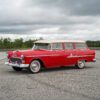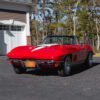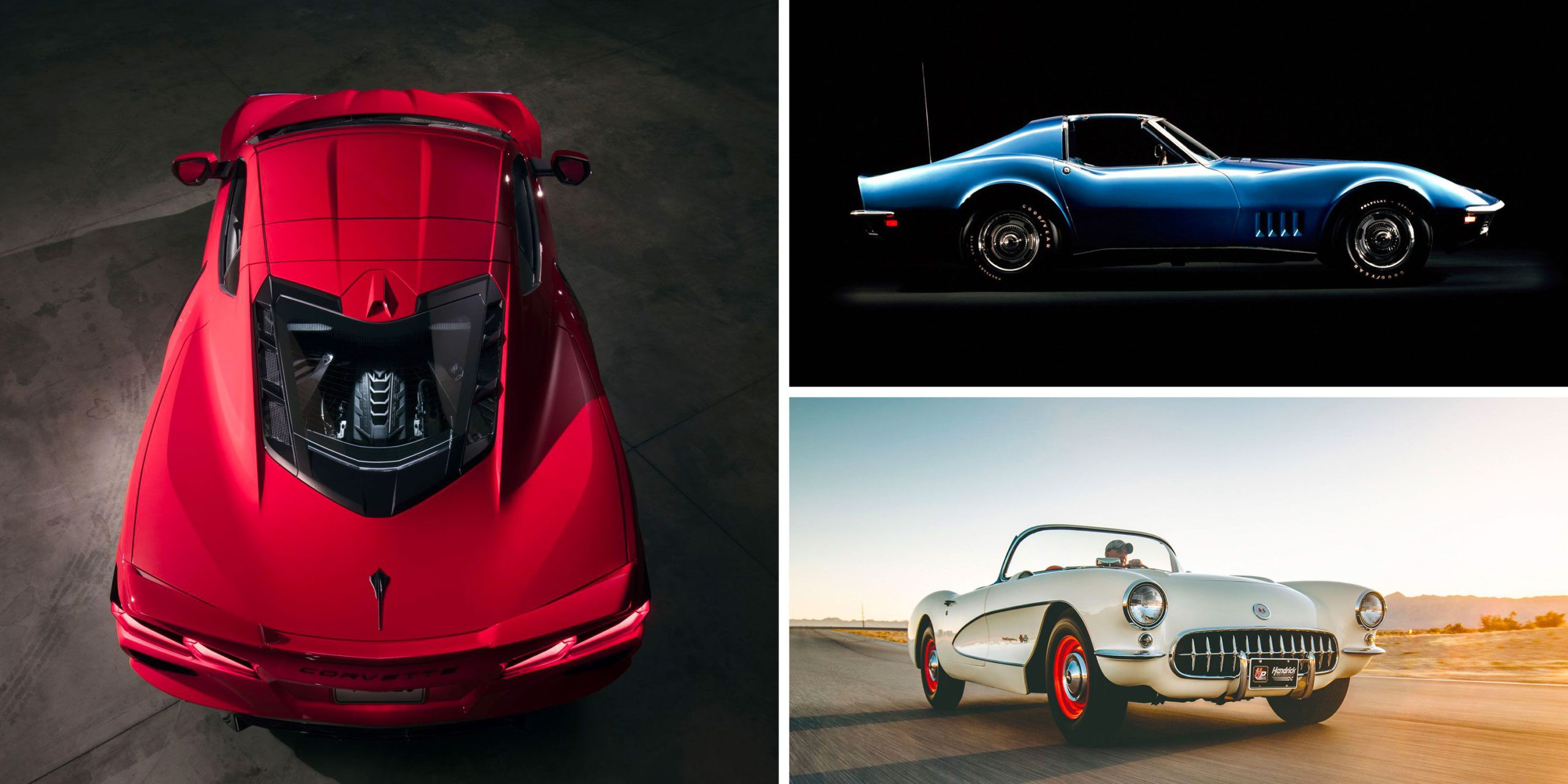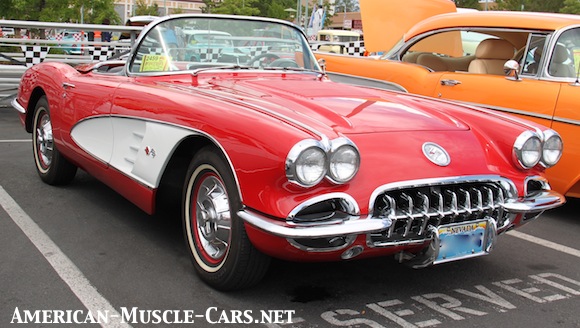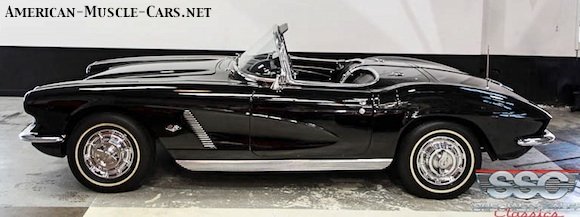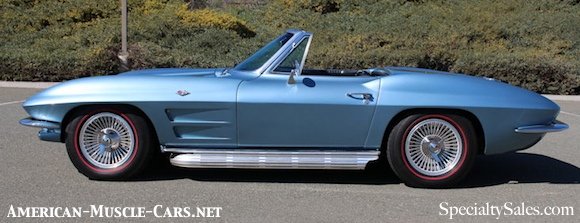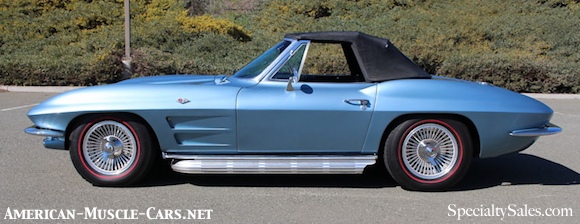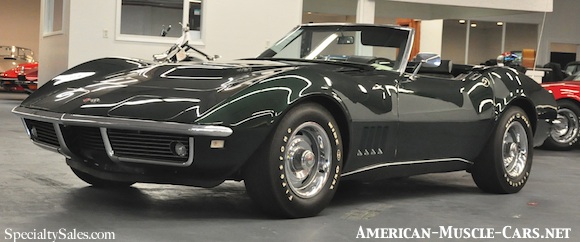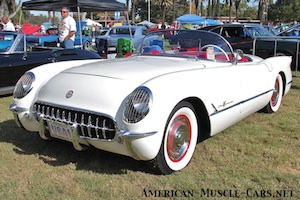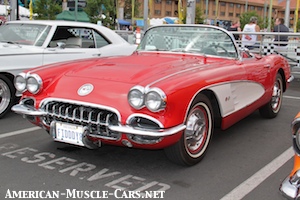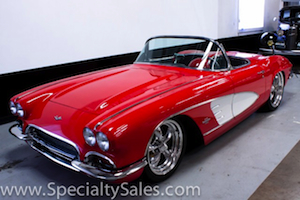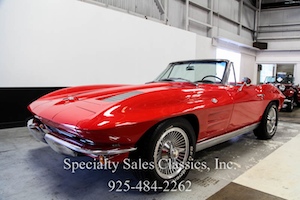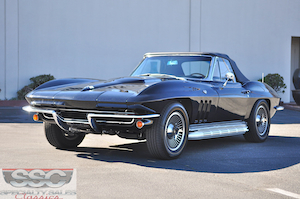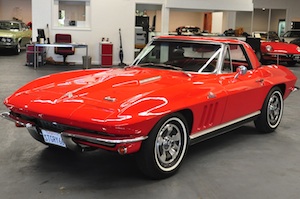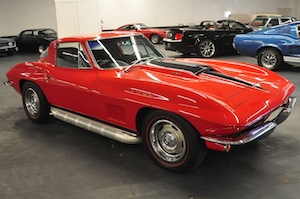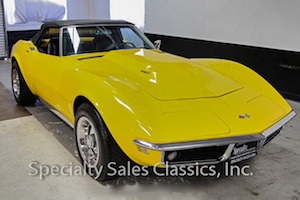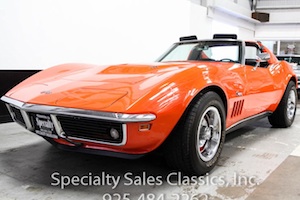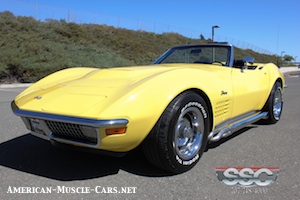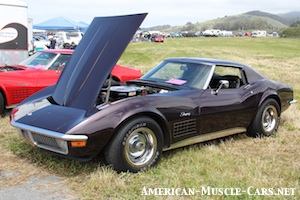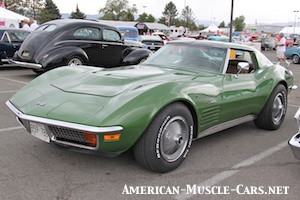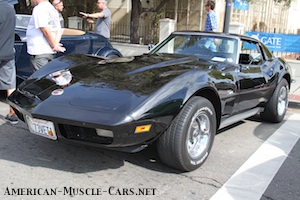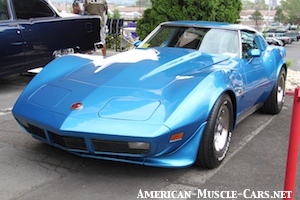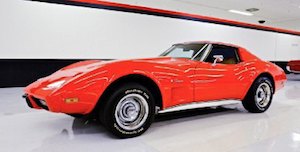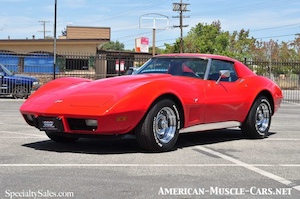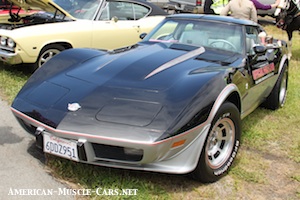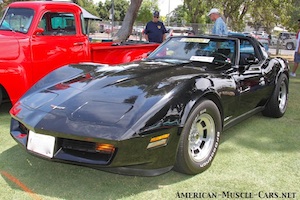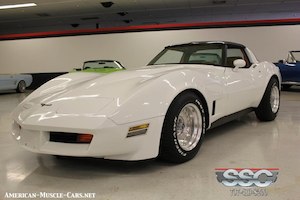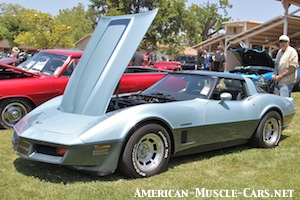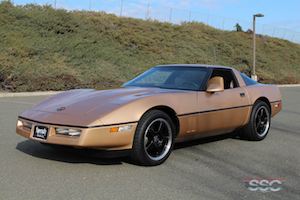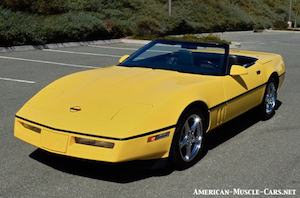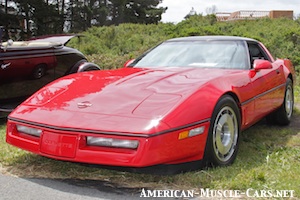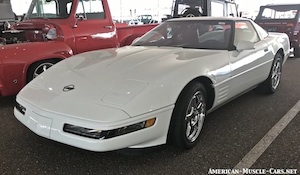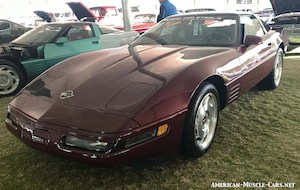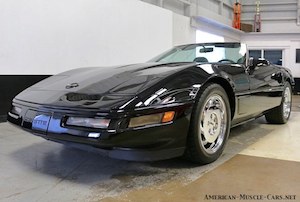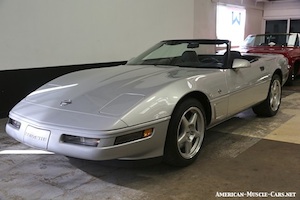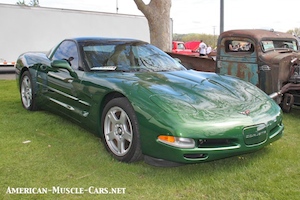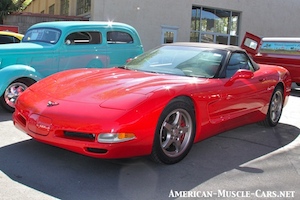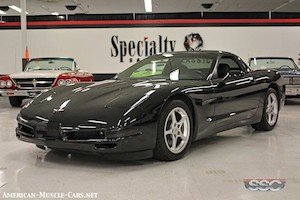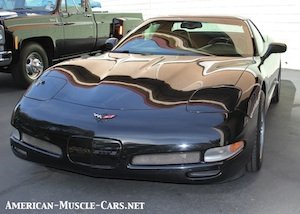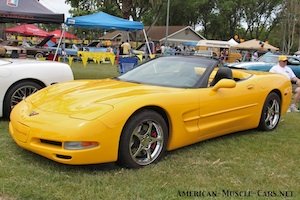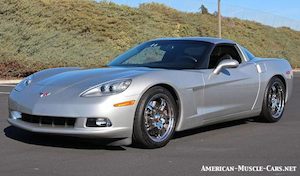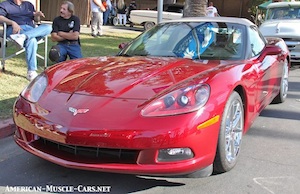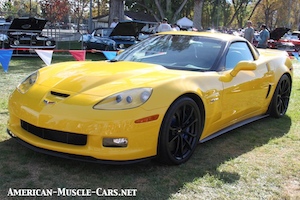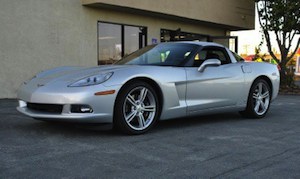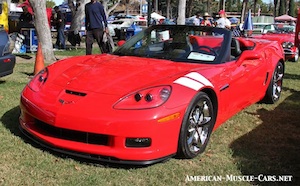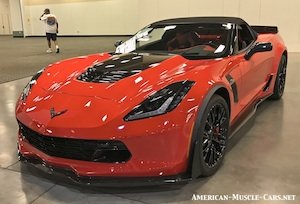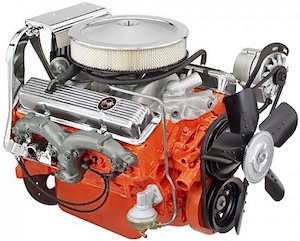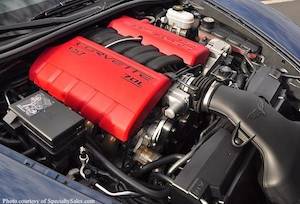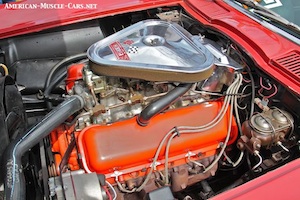Chevrolet Corvette

THE CHEVROLET CORVETTE
AN AMERICAN LEGACY
The Corvette has earned its place not only in the history of Great American Muscle Cars, or even Great American Cars overall, but of the Greatest Cars in the World. While the classic 1953 Corvette started out as more of a bloated imitation of a British sports car, complete with inline 6, things picked up very quickly in 1955 with the arrival of the small-block V-8 and Zora Arkus-Duntov. From then on, the Corvette was almost too brawny to be considered a sports car in the classic sense. It was more of a muscle car in a sports car package, and so it remained, in its own uniquely American niche. While never produced in huge numbers (an average of around 30,000 units per year), there is no arguing with the Corvette’s success. It has not only survived but kicked ass through six decades and now seven generations, emerging today as a genuinely world-class sports car, to rival any car built anywhere in the world, even at several times it’s price. That’s quite an accomplishment. Kind of makes you proud to be an American, doesn’t it? (No offense to my non-American visitors.)
7 Generations of Chevrolet CORVETTES
7-generation VISUAL COMPARISON:
C1 : 1st-generation Corvette, 1953-1962
Above: 1962 Chevrolet Corvette Roadster. All C1s were convertibles.
C2: 2nd-generation Corvette, 1963-1967
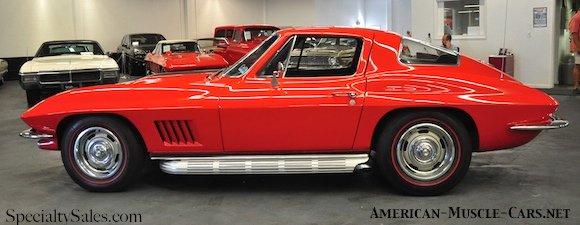
ABOVE: 1967 Chevrolet Corvette 427 Coupe with optional factory side pipes. C2s are also referred to as ‘Midyear Vettes’.
C3: 3rd-generation Corvette, 1968-1982

ABOVE: 1969 Chevrolet Corvette Roadster. C3s were also called ‘Shark Cars’ both because of their shape and early prototypes called “Mako Shark”.
C4: 4th-generation CORVETTE, 1984-1996
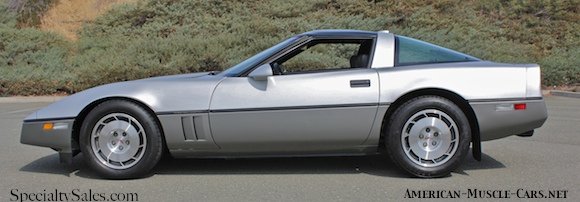
ABOVE: 1986 Corvette Coupe. The C4 brought modern performance back to this hallowed nameplate.
C5: 5th-generation CORVETTE, 1997-2004
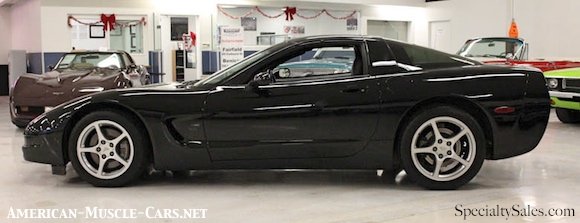
Above: 2000 Corvette Coupe. The C5 ushered in a new age of high-tech performance.
C6: 6th-generation CORVETTE, 2005-2013

ABOVE: 2006 Corvette Z06 Coupe. The C6 was the first Corvette without hideaway headlights since 1962.
C7: 7th-generation CORVETTE, 2014- ?

ABOVE: 2014 Corvette Coupe. The C7 very well could be the last front-engine Corvette. Rumor has it the C8 will be mid-engined.
7 Generations of Corvettes: THE DETAILS
C1: 1st-generation CORVETTE, 1953-1962
Chevrolet Corvette – In the Beginning…
Conceived by Harley Earl as an answer to the European and/or British sports car, and cobbled together from the standard GM parts bin, then wrapped in a sexy fiberglass body, the classic 1953 Corvette was an instant sensation. Unfortunately, due to the primitive, labor-intensive fiberglass techniques of the day, the Corvette was practically hand-built, and they were only able to produce 300 of them that first year. The only powertrain available was the age-old Stovebolt Six, now known as the Blue Flame Six” with 3 side draft carburetors, and a 2-speed Powerglide automatic. Needless to say, it was pretty anemic. But, relief arrived for the Corvette in 1955 when racing engineer Zora Arkus Duntov found a way to shoehorn Chevy’s brand new 265 small-block V8 into the Vette’s engine bay. 1955 was the only year when the classic Corvette was available with either a 6-cylinder or a V8. Not very many people opted for the 6. Starting in 1955, the Corvette received increasingly bigger and more powerful engines, reaching its climax (until the Age of the Modern Muscle Car, which we’re in right now) in 1970. But that’s another story.
BELOW: The 112th Corvette ever built. They hand-built just 300 first-year Vettes in 1953 on a temporary assembly line set up in Flint MI. This 1953 Chevrolet Corvette now sits in the Sloan Museum in Flint.

Chevrolet Corvette – Early Development
Cosmetic changes were made every year, with a major facelift in 1957. The classic 1957 Corvette was significant for several other reasons also. For 1957 was the year that the Chevy small-block V8 got it’s first enlargement, from 265 cubic inches to 283, and of course the Corvette was the willing recipient. Once again, Zora was behind the scenes massaging more power out of what were essentially commuter passenger car engines, with wild solid-lifter cams and even wilder multiple carburetor setups. His crowning achievement, and the other reason why the 1957 Chrevrolet Corvette is so significant, was the Rochester mechanical fuel injection system that replaced the conventional carburetor altogether. You have to understand, in the 1950s, no one had ever even heard of fuel injection. It was a wild-looking setup back then, and it produced unheard-of perform, breaking a new threshold for a production car: one horsepower per cubic inch. The hottest new ’57 Vette could be had with a 283hp 283 V8 “fuelie”, and they were wicked! This was really a milestone. GM, Chevy, was the first to mass produce a car with fuel injection. I’m getting proud again.

WRAPPING UP THE FIRST GENERATION. Horsepower and performance option packages continued to multiply, in the late 1950s. But very few “convenience” or “comfort” items were ever offered in any of the classic First-Generation Chevrolet Corvettes. The tops didn’t fit well, the heaters were marginal, no power steering, no power brakes, forget air conditioning. But that was about to change. The body style, freshened in 1957, stayed pretty much the same, with minor trim and detail differences year-to-year, until 1961 when the shape of the tail changed completely, ushering in the trademark Corvette 4 round tail lights and the “Stingray” tail. The last year for the First-Gen Corvette, 1962, was also the first year for the next enlargement of the Chevy small-block V8, punched out from 283 cubes to 327.
C2: 2nd-generaton CORVETTE, 1963-1967
Chevrolet Corvette – “The Mid-Year Vettes”
People went nuts when they saw the amazing new 1963 Corvette, with its futuristic, and yet animalistic styling, hide-away headlights, and even more power than before. And the looks weren’t just a front, the new Chevy Corvette was loaded with advanced features for the day, including 4-wheel independent suspension, almost unheard of at the time. Again, Duntov poured his sweat into hotter and hotter versions of the classic Corvette, and for the new 1963 he introduced a new version of his Rochester fuel injection system. By 1965, he had it pumping out 375 hp from the top-line 327. But alas, the arrival of smog regs in 1966 killed this early venture into fuel injection. Truly a shame. I had one of these systems, straight out of a ‘65 Vette in my 1955 Nomad back in the day, and there was nothing that could touch me through the gears.
MIDYEAR CORVETTE – A SHORT GENERATION
The “Midyears” represent the shortest of the seven Corvette generations to far, at only 5 model years, 1963, 1964, 1965, 1966 and 1967. But what a generation. Midyear Vettes are among the most sought after by collectors and enthusiasts. Of course the performance during these 5 years steadily increased, and in 1965, Chevy stuffed it’s new “Mystery Motor” into the Vette, and a legend was born. This new 396 cubic inch monster became known as a ‘Big Block’ (as opposed to the 265, 283 & 327 small blocks), and the Corvettes that got them were “Big Block Vettes”. They even got their own distinctive “Stinger hood”. You could now get some comfort options on a Corvette also, although they were far from comfortable, especially if you were very tall, or long-legged.
C3: 3rd-generation CORVETTE, 1968-1982
ABOVE: 1968 CORVETTE ROADSTER
BELOW: 1972 CORVETTE COUPE
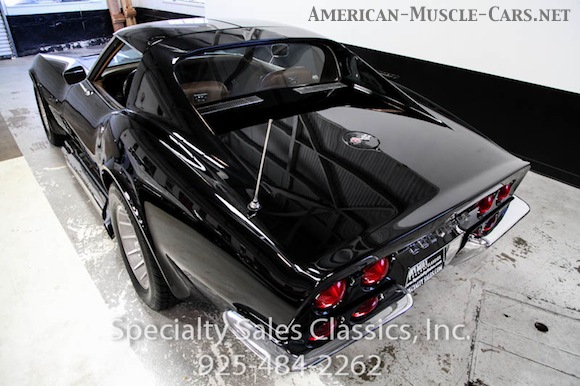
C3 Chevrolet Corvette – “The Shark Cars”
Big changes came in 1968. A whole new look, even more performance than before (of course), and even though it the new car rode on the same basic chassis as before, nearly everything was upgraded and/or modernized. For the first time, this new Chevrolet Corvette seemed like a real car. Things like power windows and door locks, power steering and brakes, air conditioning that actually blew cold, and something totally new, and incredibly cool: T-Tops. During these first few years of the Third-Gen, the body stayed more or less the same with minor trim and/or styling differences, but the horsepower continued to build, peaking, with the rest of the American Muscle Car world in 1970. The end of the first American Muscle Car Era was drawing to a close. By 1973, it would be all over. Performance was dead. The lead was gone in the gas, compression ratios were former shadows of their former selves, and it was only getting worse. Fortunately the Corvette managed to survive through it all and emerge out the other side better than ever before. Who could have figured?
RUBBER-BUMPER CORVETTES – THE SMOG MAN COMETH
In 1970, the top small block in a Corvette was the 350 LT1 at 370hp, and the top big block was the 454 LS6 at a conservative 425hp. It would be decades before we ever saw numbers like that again. In fact, the next time a Corvette would break the 370hp-barrier was in 1993, with the introduction of the new LT1 at 400hp. But, back in the 70s, things were bad and getting worse. Not only were ever-stricter emissions mandates choking off horsepower, but crash safety requirements were changing the shape of cars. In 1973, for the first time, these new laws set a frontal-crash standard. How do you take a car like the Corvette, that’s shaped like a bullet and made of plastic, and make it crash-worthy? Turn the whole nose into a big energy-absorbing rubber nose cone. While Chevrolet found a way to get the Camaro through one more year without major changes, by beefing up the bumper brackets. But they weren’t so lucky with the 1973 Chevrolet Corvette. A whole new approach was needed, and hence a whole new look. Born was the rubber ‘shark nose’, but the chrome rear bumper remained, a unique trait of classic 1973 Chevrolet Corvettes.
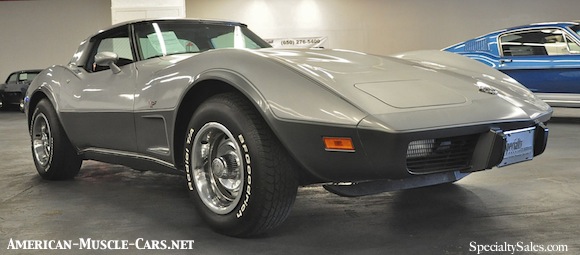
ABOVE: 1978 was the 25th Anniversary of the Corvette, so Chevrolet minted a special edition to commemorate the occasion. The 1978 Corvette Silver Anniversary Edition. Mostly it was a special appearance package all in silver, with silver leather interior and every conceivable option included as standard equipment. Actually, they were a great looking car then, and now.
THE 70’s WERE TOUGH ON THE CORVETTE
Things only got worse after that. By 1976, due to rising insurance costs, the Corvette Roadster disappeared, leaving only the coupe, with T-Tops being the most open-air experience you were going to get in a Corvette. Performance was pretty much deplorable during the late 70s, with some signs of life in 1981, when Cross-Fire Injection arrived on the 5.7 (350) V8, marking the first time since 1965 that a Chevrolet Corvette had fuel injection. It looked really cool, like two 4-barrels sitting on a cross-ram manifold, but it didn’t produce much horsepower, and was fussy. In fact, in 1982, the top-rated engine had a 4-barrel carburetor and made 5 hp more than the Cross-Fire. The last C3 was the 1982 model. She had a long run, 15 model years. That’s an eternity in the car business. The change over to the next generation Corvette would take so long that they skipped right over the 1983 model year.
C4: 4th-generation CORVETTE, 1984-1996
4th-Gen Chevrolet Corvette is All New!
The C4 was the first truly technologically-advanced Corvette. The other generations before it had been built mostly by modifying existing parts. This new Corvette now had many more parts that were not only different, but made differently. Pressed steel suspension A-arms were replaced by elegantly cast alloy pieces. The heavy steel traverse leaf springs were replaced by lightweight, high-tech composite units. Gone were the dirty old carburetors, from here on out it was fuel injection all the way. The dash was high-tech. Where the C3 looked organic, like a shark, the C4’s smooth new body looked like a space ship. And that wild tilt from end that exposed all this race car-looking hardware just completed the package. This was one impressive car.
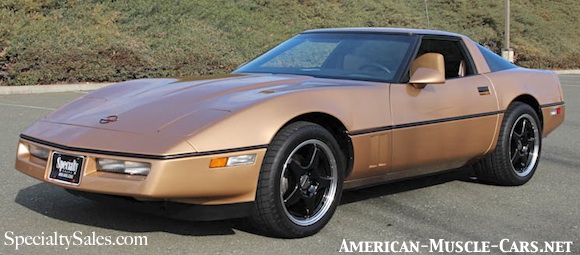


The ultimate C4 was the ZR-1. Built from 1990 through 1995, the ZR-1 was Chevy‘s attempt to make the Vette a truly world-class supercar. To do this then needed a high-tech DOHC engine. They went to Lotus for the engineering, then Mercury Marine to produce the complex 400hp powerplant. Called the “King of the Hill”, it was a stunning performer in its time. A total of 6,939 were built.
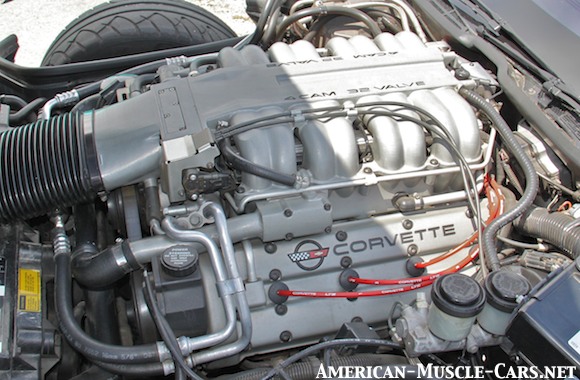
C5: 5th-generation CORVETTE, 1997-2004
C5 Rewrites the Chevrolet Corvette Formula
While the C4 was the first truly advanced car, the C5 was the first truly world-class high performance sports car. For the first time, the Corvette could be taken seriously the world over, in the company of the Germans, the Brits and even the Italians. A new bonded unibody kept the weight down while increasing stiffness and improving handling.
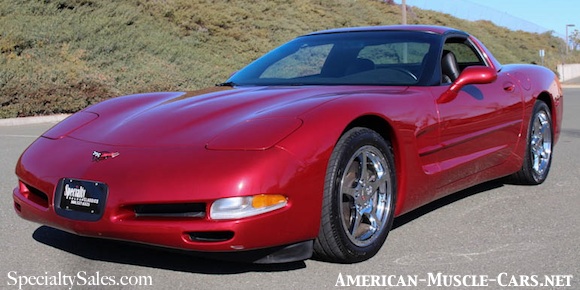

C6: 6th-generation CORVETTE, 2005-2013
C6 Chevrolet Corvette is Evolutionary
As good as the C5 was, the C6 got even better, by just about every measure. It was also made slightly shorter, to better suit foreign markets, which were now starting to recognize the Corvette as a truly world-class supercar, especially in Z06 and ZR1 form. These new cars lost the hideaway headlights, for the first time since 1962. They added power and shed some weight. And the handling steadily improved.

C7: 7th-generation CORVETTE, 2014 – ?
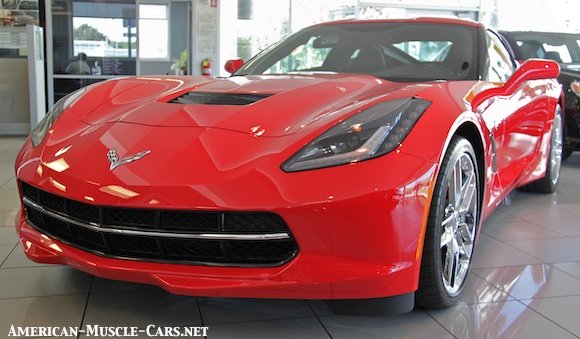
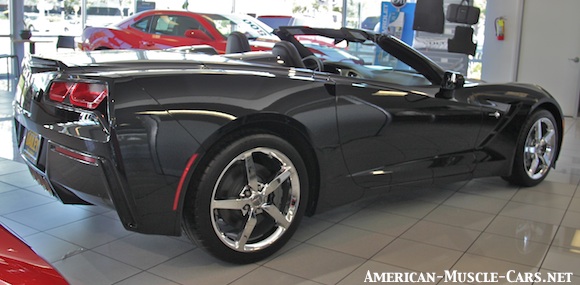
7th-Gen Chevrolet Corvette finally World-Class
The new Corvette is here, and its better than ever, of course. I got the above red couple & black convertible when they were the first C7s to arrive in the Bay Area. Check out all the pictures. It is indeed a better car by nearly every measure than the one it replaces. Not only is it faster, better handling, better braking, and more efficient, it just feels like its a much more solid car. It feels like a real car instead of a fiberglass kit car, the doors close with a solid ‘clunk’, and the fit & finish is impeccable, truly world-class. And of course the performance is through-the roof! And all still priced in the $50K’s. How do they do it?
BELOW: I caught a sneak peak of this 2015 Corvette Z06 at the Barrett Jackson Auction at Hot August Nights, and its extraordinary! 650 horsepower…what else can I say?
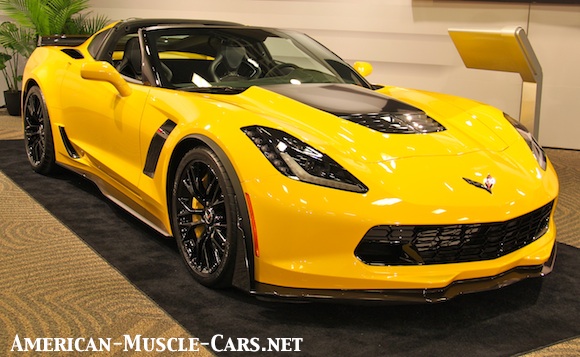
Chevrolet Corvette YEAR-BY-YEAR
We capture pics of this, the 112th of just 300 First-Year Vettes. It now sits in the Sloan Museum in Flint MI.
2nd year for the Corvette. Few changes from ’53. Still powered by a 235ci “Blue Flame Six” and 2-speed Powerglide automatic.
First year for the V8 engine. Things were just starting to heat up. More power was on the way.
First major restyle since 1953 with several Corvette firsts: side coves, 2-tone paint, external door handles & roll-up windows. 2X4-barrel setup appears for first time in optional 225hp 265.
The 265 V8 gets punched out to 283 cubes. Rochester mechanical fuel injection makes its debut & became the first production engine to make one horsepower per cubic inch.
A whole new look for the Corvette. Quad headlights & an aggressive new toothy grille with side vents on either side.
America’s Sports Car thunders through the 50s, gathering speed. The 60s are almost here and big changes are on the horizon.
The Corvette thunders into a new decade with more power, of course, and more on the way. The last year for the old-style rounded tail.
A new look. No teeth up front, 4 round taillights start a Corvette tradition. Ducktail signals new styling direction. Lots of power, dual 4-barrels, fuel injection, 4-speeds. It’s a Corvette, right?
Last year of the 1st-generation. 283 V8 is replaced by the 327. No more 2-tone paint schemes & no chrome trim around the coves.
Exciting new 2nd-gen Vette debuts in Coupe & Convertible. All-new chassis w/4-wheel independent suspension. Coupe has split rear window. Loads of new options.
Split window is gone, one-piece rear window replaces it. 2 top engines get a boost in horsepower output.
Last year for Fuel Injection. First year for 4-wheel disk brakes, and Big Block power. This is the only year you could get a 396 in a Vette.
396 big block is retired in favor of the new 427. The Corvette continues to be steadily refined & improved.
Last of the Mid-Year Corvettes (aka: C2 or 2nd-generation), ’67s are easy to spot: they’re the only ones with 5 vertical “gills” in the front fenders.
First of the 3rd-generation, most of the mechanicals were carried over from the C2. But the new styling was nothing sort of ground-breaking. It looked like the future! The name “Stingray” disappeared on the ’68, to return again in ’69 as the “Sting Ray”.
The peak of Classic Corvette performance. 370hp LT1 350 small block & the mighty LS6 454 big block w/450hp. Never again. Horsepower started heading south the following year.
Horsepower peaked in 1970 & it got worse every year throughout the 1970s, starting with the 1971. Otherwise, little changed from the previous year.
Last of the “Chrome Bumper Cars”. Rubber bumpers followed in ’73. Last year for the LT1 350 & the ZR1, albeit at lower “SAE Net” ratings.
First year for the “Rubber Bumper”, but only in front. Rear bumper is still chrome. Clean new side vents & radial tires.
1974 CORVETTE
First year for rear Rubber Bumper. ‘Ducktail’ rear spoiler is gone. Last year for the big block 454 V8.
1975 CORVETTE
Last year for convertible. First year for catalytic converter & HEI. Top engine makes 205 hp! Standard engine wheezed out only 165 hp. This was the bottom.
1976 CORVETTE
1976 was just barely coming back from the bottom of the performance slump, with 180hp.
The late 70s weren’t a good time for the Corvette. Power was down, weight was up, smog & safety were king. Modest performance remained.
25th year is celebrated with a Silver Anniversary Edition, painted silver with silver leather interior. Corvette also served as the Indy Pace Car & a special edition was issued.
1980 CORVETTE
The C3 Corvette thunders into a new decade…maybe more of a cough than thunder.
1981 CORVETTE
High style, good handling, but anemic power. It’s L81 350 V8 wheezed out a paltry 190 horses.
Last of the 3rd-generation, there were no ’83s. First year for the dreaded “Crossfire Injection”, nicknamed “Mis-Fire Injection by frustrated owners. It was fussy, idled too fast & wasn’t any faster than a 4-barrel. Oh well, it was the C3’s swan song.
1984 CORVETTE
Last year for CrossFire. TPI arrives in ’85. Help is on the way!
1985 CORVETTE
Second-year of the C4-generation, first year for Tuned Port Injection (TPI) 245hp 5.7 V8.
1986 CORVETTE
Largely carried-over from ’85 with small improvements & refinements. Just keeps getting better & better.
1987 CORVETTE
The C4 now had a 5.7L (350) V8 with Tune Port Injection (TPI) and 245hp, which was a ton in 1987. And it looked great under that big tilt front end.
1988 CORVETTE 35th Anniversary
1988 marked 35 years since that first 1953 Corvette. They celebrated with all all-white 40th Anniversary Edition.
Chevy went to Lotus to design a new DOHC 32-valve V8, Mercury Marine built it. The ZR1 was the result.
1991 CORVETTE ZR1
Chevy’s goal was to elevate the Corvette to world-class status, on par with the Europeans, so they added a Lotus-designed DOHC 32-valve V8.
First year for the new 5.7 LT1 engine w/300hp. Good things are on the way!
1993 CORVETTE
First year for the 405-horse LT5 V8 (ZR1 only). Performance is back!

1995 CORVETTE
The base engine is the 300hp LT1, while the ZR1 gets the 405hp DOHC 32-valve LT5.
1996 CORVETTE
The last year of the C4-generation. It had become quite a fine car in its own right. But the C5 was right around the corner.
The C5 Corvette entered the new millennia with power, handling & increasing sophistication.
The C5 Corvette got steadily better, and faster, with each passing year.
What happens when you bore & stroke a small block out to 427 cubic inches? The 505hp 7.0-liter LS7 that’s what & it was the basis for the C5 Z06, 2000-2005.
Check out this well-optioned C5 convertible, inside & out.
2003 CORVETTE Z06
Chevy’s 405hp Top Dog in 2003.
2004 CORVETTE
The last & perhaps the best of the C5-generation. Lots of Z06s built this year, including lightweight hardtops.
2006 CORVETTE CONVERTIBLE
With 400-horse 6.0L LS2 V8. The big news of course was the introduction of the new Z06 with 505-horse 7.0L LS7.
2007 CORVETTE
The standard Corvette engine is now the 6.0-liter LS2 V8, cranking out 400hp & 400 lb-ft of torque.
The fun continues with the C6 Z06. The 7.0 LS7 V8 is the most powerful engine GM has ever installed in a passenger vehicle to that point.
2008 CORVETTE CONVERTIBLE
Drop-dead gorgeous drop-top.
2009 CHEVROLET
Base engine is the 430-horse 6.2L LS3 V8, or the 505-horse 7.0L LS7.
2010 GRAND SPORT CONVERTIBLE
Grand Sport handling with the top down!
Perhaps the best all-around handling C6, the Grand Sport got all the best suspension & brakes.
The C7, the first new Vette in 10 years, 7th-generation is here! And it’s a brilliant masterpiece of a car! World-class performance, looks, quality & even interior. Jaw-dropping pictures of the new Coupe & Convertible.
Take a sneak peak at the 2015 Z06, before it hits showrooms. We caught a Coupe & a Convertible and took some eye-popping pictures.
2016 C7 CORVETTE Z06
It’s a 650-horse supercharged track missile.
2019 CORVETTE ZR1
On preview under the lights at the Barrett-Jackson auction in Scottsdale, Jan 2018. Striking looks, wicked performance, huge wing!
Corvette SPECIAL MODELS
Take a C4, add one DOHC 32-valve V8, and all best parts. What you get is the ZR1. Very fast for its day.
Corvette ENGINES
Gen 1 of Chevy’s mighty Mouse Motor in all it’s glory, and through all its changes over the years, from 1955 through 2003. Pictures, Specs, History & more.
LS-series Small Block V8
Chevy’s modern LS small block engine family includes the 4.8L, 5.3L, 5.7L, 6.0L, 6.2L, 6.2L supercharged & 7.0L. An LS has powered every Corvette since 1997.
The Chevy Big Block V8
Chevy’s all-powerful Rat Motor through 5 generations or ‘Marks’, from the 348 to modern times. Pictures, Specs, History & more.


